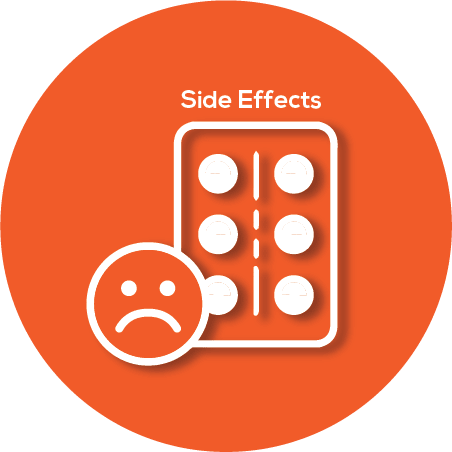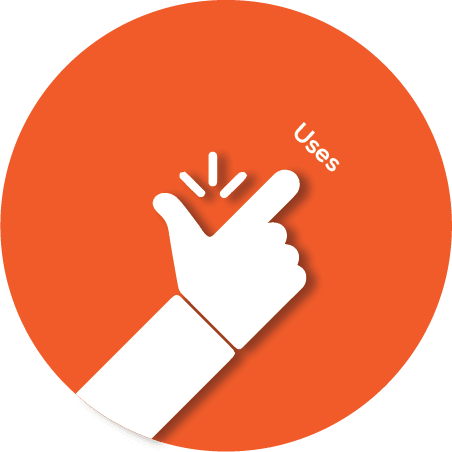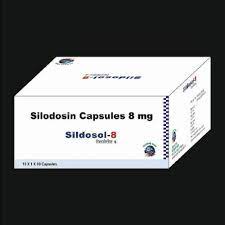Ripadep Plus 1mg/500mg Tablet REPAGLINIDE + METFORMIN
Introduction to Ripadep Plus 1mg/500mg Tablet
Ripadep Plus 1mg/500mg Tablet is a combination medication primarily used to manage type 2 diabetes. This tablet helps control blood sugar levels as part of a comprehensive diabetes management plan that includes diet and exercise.
Composition of Ripadep Plus 1mg/500mg Tablet
Ripadep Plus 1mg/500mg Tablet contains two active ingredients: Metformin and Repaglinide. Metformin decreases glucose production in the liver and improves the body's sensitivity to insulin. Repaglinide stimulates the pancreas to release more insulin, which helps lower blood sugar levels after meals.
Uses of Ripadep Plus 1mg/500mg Tablet
- Management of type 2 diabetes
- Control of high blood sugar levels
Side effects of Ripadep Plus 1mg/500mg Tablet
- Nausea, vomiting, diarrhea, and stomach upset (common with Metformin)
- Low blood sugar, headache, and joint pain (common with Repaglinide)
- Rare but serious side effect: lactic acidosis (Metformin)
Precautions of Ripadep Plus 1mg/500mg Tablet
Metformin should be avoided in individuals with kidney problems or excessive alcohol consumption due to the risk of lactic acidosis. Repaglinide should not be used in severe liver disease. Both medications can cause low blood sugar, so regular monitoring is important.
How to Take Ripadep Plus 1mg/500mg Tablet
Ripadep Plus 1mg/500mg Tablet should be taken as prescribed by your doctor. Metformin is usually taken with meals, while Repaglinide is typically taken before each meal. Follow your doctor’s advice for the correct dosage and timing.
Conclusion of Ripadep Plus 1mg/500mg Tablet
Ripadep Plus 1mg/500mg Tablet, containing Metformin and Repaglinide, is used in the therapeutic class of antidiabetic medications to manage type 2 diabetes. It is manufactured to help control blood sugar levels effectively. Regular monitoring and adherence to prescribed dosages are key highlights for optimal results.

Are the medicines in combination of Metformin and Repaglinide safe to take together?
Metformin, which is a medication used to control blood sugar levels in people with type 2 diabetes, and Repaglinide, which is another medication that helps the pancreas produce more insulin, can interact with each other. This interaction can lead to an increased risk of low blood sugar, which is a condition where blood sugar levels drop too low. To monitor for this interaction, it's important to regularly check blood sugar levels, especially when starting or changing doses of these medications. Symptoms of low blood sugar include feeling shaky, sweating, confusion, and dizziness. If you experience these symptoms, it's important to consume a quick source of sugar, like juice or candy, and contact your healthcare provider. Regular follow-ups with your healthcare provider can help manage and adjust medication doses to prevent interactions.

Are there harms and risks from taking combination of Metformin and Repaglinide?
Metformin, which is a medication used to control blood sugar levels in people with type 2 diabetes, commonly causes side effects like nausea, vomiting, diarrhea, and stomach upset. A significant adverse effect is lactic acidosis, which is a rare but serious condition where lactic acid builds up in the bloodstream. Repaglinide, which is also used to manage blood sugar in type 2 diabetes, can cause side effects such as low blood sugar, headache, and joint pain. A unique adverse effect of Repaglinide is hypoglycemia, which refers to dangerously low blood sugar levels. Both medications aim to control blood sugar but work differently; Metformin decreases glucose production in the liver, while Repaglinide stimulates insulin release from the pancreas. Despite their differences, both medications share the common goal of managing blood sugar levels in people with type 2 diabetes.

Can I take combination of Metformin and Repaglinide if I am pregnant?
Metformin, which is a medication used to control high blood sugar in people with type 2 diabetes, is generally considered safe during pregnancy. It helps improve the body's response to insulin, which is a hormone that regulates blood sugar levels. Metformin is often used in pregnant women with polycystic ovary syndrome, which is a condition that affects a woman's hormone levels, to help with fertility and reduce the risk of gestational diabetes, which is diabetes that develops during pregnancy. Repaglinide, which is another medication used to control blood sugar in type 2 diabetes, works by stimulating the pancreas to release insulin. However, there is limited information on the safety of repaglinide during pregnancy. It is generally recommended to avoid using repaglinide during pregnancy unless absolutely necessary. Both medications are used to manage blood sugar levels in type 2 diabetes, but metformin is more commonly used during pregnancy due to its established safety profile. Repaglinide, on the other hand, is less commonly used during pregnancy due to limited safety data.

Can I take combination of Metformin and Repaglinide while breastfeeding?
Metformin, which is a medication used to control high blood sugar in people with type 2 diabetes, is generally considered safe during breastfeeding. It passes into breast milk in small amounts, but it is unlikely to harm a nursing infant. Mothers taking Metformin should monitor their babies for any unusual symptoms, but significant side effects are rare. Repaglinide, which is another medication used to manage blood sugar levels in type 2 diabetes, has less information available regarding its safety during breastfeeding. It is not known how much of the drug passes into breast milk or its effects on a nursing infant. Therefore, caution is advised, and healthcare providers may recommend alternative treatments. Both Metformin and Repaglinide are used to manage diabetes, but Metformin is more commonly recommended during breastfeeding due to its established safety profile. Mothers should always consult their healthcare provider to determine the best treatment option.

Can I take combination of Metformin and Repaglinide with other prescription drugs?
Metformin, which is a medication used to control high blood sugar in people with type 2 diabetes, can interact with several drugs. It may have interactions with diuretics, which are medications that help remove excess water from the body, and corticosteroids, which are anti-inflammatory drugs. These interactions can affect blood sugar levels. Repaglinide, which is another medication for type 2 diabetes, can interact with drugs like gemfibrozil, which is used to lower cholesterol, and certain antifungal medications. These interactions can increase the risk of low blood sugar. Both Metformin and Repaglinide are used to manage blood sugar levels in diabetes, but they work differently. Metformin decreases glucose production in the liver, while Repaglinide stimulates insulin release from the pancreas. Both drugs can interact with other medications that affect blood sugar, so it's important to monitor blood sugar levels and consult a healthcare provider when taking other medications.

For how long is combination of Metformin and Repaglinide taken?
Metformin and Repaglinide are both used to manage type 2 diabetes, which is a condition where the body does not use insulin properly. Metformin is often taken long-term, as it helps to control blood sugar levels by decreasing glucose production in the liver and improving insulin sensitivity, which means the body's cells use insulin more effectively. Repaglinide, on the other hand, is usually taken before meals to help the pancreas release more insulin, which helps lower blood sugar levels after eating. Both medications are typically used for an extended period, often for many years, as part of a comprehensive diabetes management plan. They share the common goal of controlling blood sugar levels but work in different ways. Metformin is often the first choice for treatment, while Repaglinide is used when more immediate control of blood sugar is needed.

How does combination of Metformin and Repaglinide work?
Metformin and Repaglinide are both used to help control blood sugar levels in people with type 2 diabetes, which is a condition where the body does not use insulin properly. Metformin works by decreasing the amount of sugar the liver releases into the blood and by improving the body's response to insulin, which is a hormone that helps cells absorb sugar from the blood. On the other hand, Repaglinide works by stimulating the pancreas to release more insulin, which helps lower blood sugar levels after meals. Both medicines aim to lower blood sugar levels, but they do so in different ways. Metformin is often used as a first-line treatment, while Repaglinide is used when quick control of blood sugar is needed around meal times. They can be used together to provide a more comprehensive approach to managing blood sugar levels.

How does one take combination of Metformin and Repaglinide?
Metformin should be taken with meals to help reduce stomach upset, which refers to discomfort in the stomach area. It is important to avoid excessive alcohol consumption while taking Metformin, as it can increase the risk of lactic acidosis, which is a rare but serious condition where lactic acid builds up in the blood. Repaglinide should be taken before meals, usually 15 to 30 minutes before eating, to help control blood sugar levels. It is important to eat a meal after taking Repaglinide to prevent low blood sugar, which is a condition where blood sugar levels drop too low. Both Metformin and Repaglinide are used to manage blood sugar levels in people with type 2 diabetes, which is a condition where the body does not use insulin properly. They should be used as part of a complete treatment plan that includes diet and exercise.

How do I know if combination of Metformin and Repaglinide is working?
The benefits of Metformin and Repaglinide are measured by their ability to control blood sugar levels in people with type 2 diabetes, which is a condition where the body does not use insulin properly. Metformin works by decreasing glucose production in the liver and improving the body's sensitivity to insulin, which is a hormone that helps control blood sugar levels. Repaglinide, on the other hand, stimulates the pancreas to release more insulin, which helps lower blood sugar levels after meals. Both medicines aim to prevent complications of diabetes, such as nerve damage and heart disease, by maintaining blood sugar levels within a target range. They are often assessed through regular blood tests that measure the average blood sugar level over a few months, known as the A1C test. While they work differently, both Metformin and Repaglinide share the common goal of managing blood sugar levels effectively.

How do I store combination of Metformin and Repaglinide?
Metformin and Repaglinide do not require refrigeration. Both should be stored at room temperature, which means keeping them in a place that is not too hot or too cold, typically between 68°F and 77°F (20°C to 25°C). It's important to keep them away from moisture and direct sunlight, so a dry place like a cabinet is ideal. Metformin, which is used to control blood sugar levels in people with type 2 diabetes, should be kept in its original container with the lid tightly closed. Repaglinide, which helps the pancreas produce more insulin, should also be stored in a similar manner. Both medications share the common attribute of being used to manage blood sugar levels in diabetes, but they work in different ways. Metformin decreases glucose production in the liver, while Repaglinide stimulates insulin release from the pancreas.

How effective is combination of Metformin and Repaglinide?
Metformin and Repaglinide are both used to manage type 2 diabetes, which is a condition where the body does not use insulin properly. Metformin works by decreasing glucose production in the liver and improving the body's sensitivity to insulin, which helps lower blood sugar levels. It is often the first medication prescribed for type 2 diabetes due to its effectiveness and safety profile. Repaglinide, on the other hand, stimulates the pancreas to release more insulin, which helps control blood sugar levels after meals. It is particularly useful for people who have irregular meal schedules. Both medications share the common goal of lowering blood sugar levels, but they do so through different mechanisms. This makes them effective options for managing diabetes, either alone or in combination, depending on individual patient needs.

How long does it take for combination of Metformin and Repaglinide to work?
The combination medicine you're asking about includes two active ingredients: ibuprofen and pseudoephedrine. Ibuprofen, which is a non-steroidal anti-inflammatory drug (NSAID), typically starts to work within 20 to 30 minutes. It helps reduce pain, inflammation, and fever. Pseudoephedrine, which is a decongestant, usually begins to relieve nasal congestion within 30 minutes to an hour. It works by narrowing the blood vessels in the nasal passages, which reduces swelling and congestion. Both medicines are taken orally and are absorbed through the digestive system. They share the common attribute of providing relief from symptoms, but they target different issues: ibuprofen focuses on pain and inflammation, while pseudoephedrine targets nasal congestion. Together, they can provide comprehensive relief for symptoms like those of a cold or sinus infection.

What disease or symptom is combination of Metformin and Repaglinide used for?
Metformin and Repaglinide are both used to manage type 2 diabetes, which is a condition where the body does not use insulin properly, leading to high blood sugar levels. Metformin works by decreasing the amount of sugar produced by the liver and improving the body's sensitivity to insulin, which is a hormone that helps control blood sugar levels. It is often the first medication prescribed for type 2 diabetes. Repaglinide, on the other hand, helps the pancreas produce more insulin in response to meals, which helps lower blood sugar levels after eating. While both medications aim to control blood sugar levels, Metformin is often used as a long-term treatment, whereas Repaglinide is typically taken before meals to manage blood sugar spikes. Both medications are part of a comprehensive diabetes management plan that includes diet and exercise.

What is combination of Metformin and Repaglinide?
Metformin and Repaglinide are both used to manage type 2 diabetes, which is a condition where the body does not use insulin properly. Metformin works by decreasing glucose production in the liver and improving the body's sensitivity to insulin, which is a hormone that helps control blood sugar levels. Repaglinide, on the other hand, stimulates the pancreas to release more insulin in response to meals. While both medications aim to control blood sugar levels, Metformin is often used as a first-line treatment, whereas Repaglinide is typically used when quick insulin release is needed after meals.

What is the usual dose of combination of Metformin and Repaglinide?
Metformin is usually taken in doses ranging from 500 mg to 2000 mg per day, depending on the individual's needs and how well they tolerate the medicine. Metformin is a type of medicine called a biguanide, which helps to lower blood sugar levels by reducing the amount of sugar the liver releases into the blood and by making the body more sensitive to insulin, which is a hormone that helps control blood sugar levels. Repaglinide is typically taken in doses of 0.5 mg to 4 mg before each meal, up to a maximum of 16 mg per day. Repaglinide is a type of medicine known as a meglitinide, which helps to lower blood sugar by stimulating the pancreas to release more insulin. Both medicines are used to manage type 2 diabetes, which is a condition where the body does not use insulin properly. They both aim to control blood sugar levels, but they work in different ways.

Who should avoid taking combination of Metformin and Repaglinide?
Metformin, which is used to control blood sugar levels in type 2 diabetes, can cause a serious condition called lactic acidosis, which is a buildup of lactic acid in the blood. This is more likely if you have kidney problems, liver disease, or drink a lot of alcohol. Repaglinide, which helps the pancreas produce more insulin, should not be used if you have severe liver disease. Both medicines can cause low blood sugar, which is also known as hypoglycemia, especially if you skip meals or exercise more than usual. It's important to monitor your blood sugar levels regularly. Avoid using these medications if you are allergic to them. Always consult your doctor before starting or stopping these medications, especially if you have other health conditions or are taking other drugs.











.svg)
